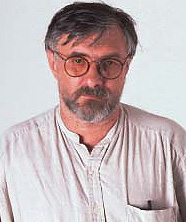
://www.tokyoplastic.com
Fascinating...
This blog has been retired Dec.2011. For more Quality links from ICE3ERG visit ICE3ERG Blog / ice1ink

View of Hillbrow looking north from the roof of the Mariston Hotel
White residents fled Johannesburg’s inner city in the 1990s. The removal of the Group Areas Act foreshadowed a flow into the city of black residents and small businesses seeking opportunities and better lives. Former denizens looked back in self-righteous justification at a city that was given over to plunder and mayhem. It was a self-fulfilling prophecy, and eyewitness reports and statistics obliged. Everyone had their horror stories.
Emerging from this period of change were the towers occupied by tenants who were holding onto tenure and managing the buildings in ways of their own devising. Their story had gone something like this: in the 1990s the owners absconded, leaving managing agents to retrieve what rents they could. In most cases, these agents were corrupt, did not pay the utilities, and disappeared with the money. They were tidy sums, paid in rents by poor people who conscientiously paid up to avoid having to go back to where they came from.
The decay of Joburg’s centre can be ascribed to many factors but perhaps none more so than the absence of communal responsibility for apartment blocks. Body Corporates had become a relic of a more genteel era; the communal responsibilities that are contentious in even the most well-heeled blocks were not marked out. Windows were broken and not repaired. Lifts froze and their shafts became tips.
It was then the buildings started looking like fire hazards to city fathers and developers with an eye on the rents that can be obtained in the bloom of an African City, and the City started closing on buildings for unpaid dues. The tenants have constituted committees to face these threats, and have with meager resources attempted to clean up the buildings. But they have delayed the inevitable. Because their committees have no basis in law, they are vulnerable to investment capital and legal maneuvers that have invoked statutes and non-compliances that carry the penalty of eviction.
Inbetween the aspirations of city council and the need of developers lies the fate of Joburg residents, the outcome of which will define Joburg as again a city of exclusion, or not.
View more of Johannesburg Series here
I've been in these places in my trip to South Africa, in 1994-1995 (of course, not exactelly in the same place, but around the streets)
Article via ak47.tv, michaelstevenson.com. Personal comments - Andreas.
I'm returning to this subject, because during my visit to South Africa in 1995-1995, i lost my camera along with all the films I shot, so now I don't have a single photo from my experience there :(
As far as I know, all photos were taken by Guy Tillim.

